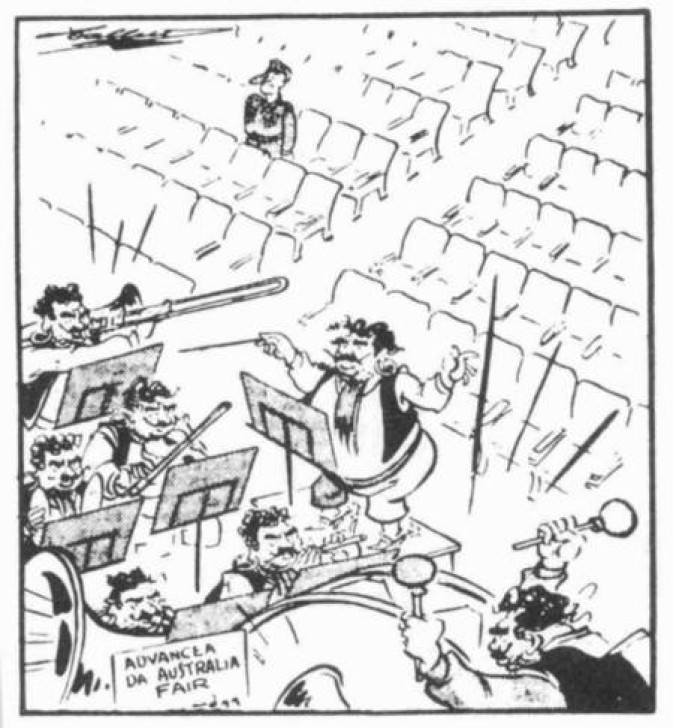Anti-dago.
Anti-dago.
Hallett, Smith's Weekly, 11 August, 1945.
The Old Folks at Home.
News item: Dr Evatt, in reply to a question, stated that applications for purchase or lease of land had been granted to 3507 aliens or naturalised subjects.
200 In the Shade.
In March 1988, Bondi identity and former Bulletin journalist, David Swain was commissioned by John Pinder to organise an exhibition for the Melbourne International Comedy Festival. The Exhibition was presented at the State Library of Victoria, and featured 200 years of cartoon depictions of Aborigines.
Later in 1988, William Collins Pty Ltd, published a book of the cartoons called 200 In The Shade.
The cartoons reflected Australia's racist prejudices, attitudes, and fears; underlying attitudes that still persist.
Swain:
"Cartoonists share these prejudices and fears but, by virtue of a special talent, they transmute them through the art form of pictorial humour.
To make fun of people is to exercise power. We all do it, and feel superior to our victims.
Cartoonists specialise in making fun of people. The art of cartooning is popular largely because it articulates this apparently universal need. Cartoonists exercise their power with kindness or with cruelty, and all points in between. The power of the cartoonists in this book to mock the differences of others has been aided by a particular history.
During our years as a self conscious colony lurching towards independence, we pursued a policy of White Australia.
As late as 1961, The Bulletin's slogan was 'Australia for the White Man'. It is hardly surprising that racism flourished, embraced by labourers and the literati.
Cartoonists are people of their times who absorb the common asumptions. They are also influenced by their fellow workers - journalists, editors and owners of the press."
The dago's
The exhibition was supposed to feature cartoons about aborigines, and to reflect both the cartoonists - and by extension - the average Australians, attitude towards aborigines.
4 of the cartoons, (dates 1921, 1930, 1945)of which this is one, however, had as their subject the (black(?)) "dago" - all anti-Greek; and 3 of them - in a real sense - anti-Kytherian.
It was the Kytherians after all who started the oyster saloons. There is considerable history, and a number of photographs pertaining to the oyster saloons on kythera-net.
There are also a number of documents on the site that indicate that Greeks were considered as non-whites. Passenger records and entry visa's for Greeks were not stamped "white" - in the era in question.
These cartoons indicate very clearly the level of antipathy of the general Australian population towards Greeks that prevailed at the time.
The stereoype depicted in these cartoons would last at least 2 generations.
Your grandparents and parents may have suffered because of prejudices of this kind.
